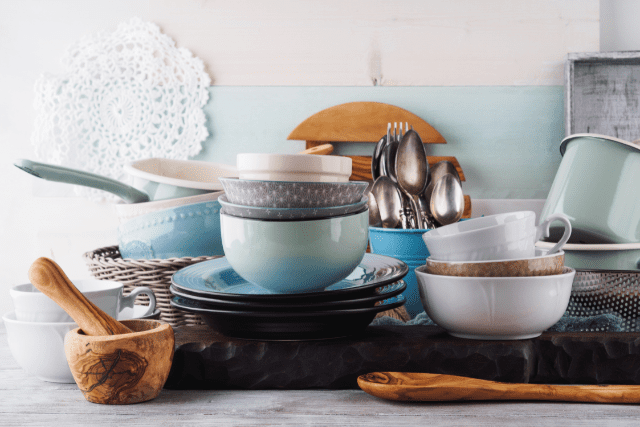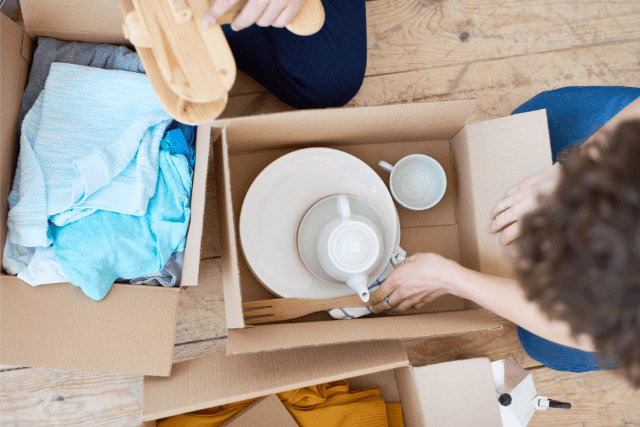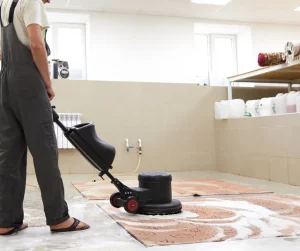Expert Tips for Packing Your Crockery: Best Practices for Facility Managers and Homeowners
Packing crockery—whether for a big office move, a change of residence, or seasonal storage—demands careful planning and the right techniques. As Chicago and suburban property managers and homeowners know, improper packing can result in costly breakage or legal headaches. In this detailed guide, Express Clean offers practical, evidence-based tips you can use to protect your investment, stay compliant, and streamline the process.
Why Smart Crockery Packing Matters
Packing fragile dishware isn’t just about avoiding chips and cracks. For facility managers and operations leads in the Chicago area, best practices help ensure safety, compliance, and efficient workflows during moves or deep cleans. Choosing the right materials and schedule will minimize risk and downtime.
Essential Packing Materials & Chemistry
- Double-walled boxes: Use sturdy, double-corrugated boxes. These handle stacking, vibration, and accidental drops better than standard cartons.
- pH-neutral paper: Acid-free tissue paper is safest for delicate glazes and finishes. Avoid newspaper ink, which can leach onto surfaces, especially when humidity rises in Chicago summers.
- Bubble wrap or foam liners: For high-value or vintage pieces, foam liners offer extra protection. Bubble wrap is effective for everyday use; use a neutral pH if possible.
- Sealing tape & labels: Reinforced tape and clear labeling ensure boxes aren’t accidentally top-loaded or stored upside-down.
Table: Material Comparison for Crockery Packing
| Material | Protection Level | Recommended Use | pH Details |
|---|---|---|---|
| Acid-free tissue | High | Fine china, ceramics | pH ~7 (neutral) |
| Regular newsprint | Medium | Sturdy plates, bowls | pH 4–5 (acidic) |
| Bubble wrap | High | All types, esp. glass | pH neutral (synthetic) |
| Foam padding | Very high | Antiques, labware | pH neutral (synthetic) |
Step-by-Step Guide: Packing Crockery Safely
- Line the box base: Use crumpled paper or foam. This absorbs shocks from below.
- Wrap each piece: Individually wrap all items. Plates are best stacked vertically, with padding between each.
- Bowl-in-bowl: Nest similar bowls with extra tissue in between to cushion pressure points.
- Fill gaps: Any empty space invites movement and breakage. Use soft cloths or additional paper for a snug fit.
- Label and handle: Mark as “Fragile: Crockery—This Side Up.” Ensure staff use correct PPE (gloves, slip-resistant footwear) during handling to avoid injury.
Scheduling Efficiency: When and How to Pack
For facility and property managers in busy Chicago environments, bulk-packing crockery during scheduled downtime reduces disruption. Sync moving or cleaning times with low-traffic hours. Referencing cleaning and move-in checklists can improve organization and prevent missed items.
Key Considerations for Operations Leads:
- Inventory first: Conduct a full inventory ahead of packing. This supports legal compliance and ensures all items are protected.
- Record dwell times: Don’t keep fragile packed crockery in vibration-heavy zones. Shorter transit/storage times reduce the risk of damage to sensitive glazes.
- Maintain separation: Cross-contamination is a risk in kitchens—use color-coded boxes for dish types to avoid mix-ups.
Compliance, Safety, and Waste Handling
According to best practices cited by OSHA and industry sources, always provide appropriate PPE during packing. Dispose of non-recyclable padding separately from cardboard. Chicago’s sustainability programs reward facilities that sort and recycle efficiently.
Frequently Asked Questions
- Is plastic wrap safe for all dishware? Most modern plastics are pH-neutral, but avoid prolonged contact with delicate antique finishes.
- How close to moving day should crockery packing occur? Ideally, as late as feasible to limit exposure to vibration, temperature swings, and accidental mishandling.
- What’s the easiest way to track what’s packed? Use digital photos and inventory lists linked to each box label.
- How does packing tie into quality cleaning? Pre-clean all crockery with neutral pH cleaners for hygienic storage and use. See our guide on safe cleaning products and tips for using baking soda.
Additional Resources & Internal Reading
- Discover essential decluttering strategies before a move.
- Read our garage cleaning guide for movers.
- See the full move-in cleaning checklist for families and facility managers.
- Visit green cleaning product safety tips for compliant choices.
Need Professional Packing or Cleaning?
Moving soon, or planning deep office cleaning in the Chicago area? Schedule expert move-out cleaning or book office cleaning in Chicago today for seamless service and peace of mind.
References
- Comprehensive moving and cleaning checklist
- Quick start cleaning reference for hospitality managers
About the Author
Reviewed by: Express Clean Team — With over 20 years of experience in commercial and residential cleaning throughout Chicago and its suburbs, our specialists deliver expert guidance on janitorial best practices, safety, and move-management efficiency.


Cleaning Company in Chicago, Move Out Service in Evanston, IL, Move Out Cleaning Chicago, Move Out Clean Service in Skokie IL, Move Out Cleaning Service in Highland Park IL, Cleaning Services Move Out in Wicker Park, Move Out Service Cleaning in Des Plaines il, Move Out Cleaning Service in Lincolnwood, Move Out Cleaning Service Winterfield Il, Move Out Cleaning Service Evergreen Park





